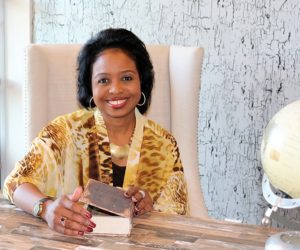
Editor’s note: In light of recent events, BankBeat offers these insights from Shirley Davis, president of SDS Global Enterprises, and Martie North Hamilton, senior vice president and director of community development/CRA at Pine Bluff, Ark.-headquartered Simmons Bank, on how banking can be more inclusive. The pair spoke to attendees of “Banking and the Economy: A Forum for Minorities in Banking,” held last fall in St. Louis.
“Diversity is inviting people to the dance; inclusion is asking them to dance,” said Shirley Davis, president of SDS Global Enterprises.
Davis believes bank leaders should engage in self-assessment, asking themselves if they are the kind of leaders who build more leaders through vision, inspiration and inclusiveness, because inclusive cultures will attract top talent (well-networked, self-starters with critical thinking skills who are team leaders and communicators).
But banks have to build the type of culture that attracts diverse talent. They must create an environment in which employees feel safe, not just physically but psychologically, a culture in which they feel free to “say something if they see something.” And you have to keep your employees engaged, not just require them to be in their seats.
“If you don’t have [corporate] values that really do speak to inclusion, you need to create some,” Davis said. “Respect should be there; collaboration should be there; trust should be there. Those are all areas that help to create the right kind of culture, the right kind of safe-to-speak environment … The other thing is to make sure you have [inclusion] built into the performance goals or expectations of every leader. Every leader should have an understanding of what the competency models are, and in that competency model, you tie that to values as well — how we treat people.
“You want to make sure that from the CEO, the president to the executive director all the way down, that they’re all clear that we are a company that embraces and values diversity. We really want to create an inclusive culture, and it’s everybody’s role and responsibility,” she continued.
Davis shared her “6 Cs of Inclusive Leadership”:
Commitment: Inclusive leaders are committed to diversity and inclusion because these objectives align with their personal values.
Courage: They speak up and challenge the status quo and are willing to have difficult conversations, admit what they don’t know and aren’t afraid of discomfort.
Cognizance of bias: They are mindful of personal and organizational blind spots and self-regulate to ensure “fair play.”
Curiosity: Inclusive leaders have an open mindset and a desire to understand how others view and experience the world.
Cultural intelligence: They are confident and effective in cross-cultural interactions.
Collaborative: They empower individuals as well as create and leverage the thinking of diverse groups.
Acknowledging unconscious biases and actively working to ensure bank culture is inclusive is difficult, Davis admitted. Still, for businesses to thrive, embracing diversity and including minority hires in every level of an organization is crucial.
“When you stay the same and when you remain in a comfort zone, you’re not becoming relevant and not keeping up with the times,” she said. “That’s a real business case, right there. We’ve got to constantly think about the fact that we’re living in an age and stage where things are changing rapidly, in our businesses, in our companies, as well as in our communities.”
Blind resumes are one way to decrease unconscious bias during the hiring phase. While Davis and others encourage minority applicants to blind their resumes, banks could replicate the idea when reviewing resumes to select interview candidates.
“We know there’s name discrimination, school discrimination. There’s zip code-related discrimination,” said Martie North Hamilton, senior vice president and director of community development/CRA at Pine Bluff, Ark.-headquartered Simmons Bank. “Remove those off resumes. If all a hiring manager can see is that applicant No. 127 has a college degree, etc., they can’t engage in those subconscious mental biases — that’s gone. Look at the substance of the resume, and constantly reinforce that differences are not bad differences. We all contribute to the bottom line and make the company stronger.”
